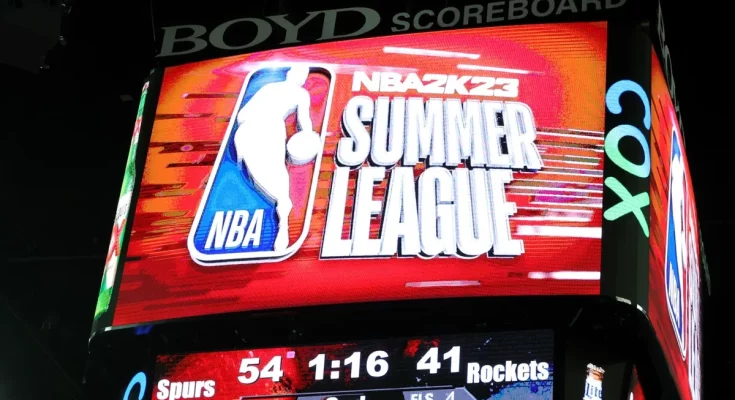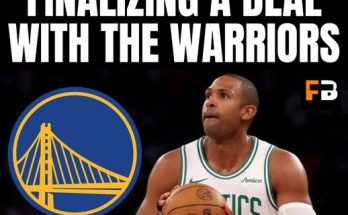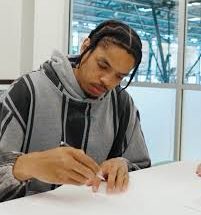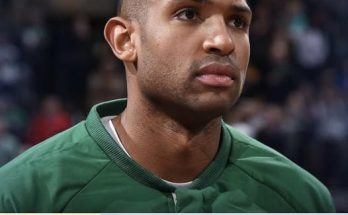The Boston Celtics continued their dominant Summer League campaign with a convincing 101-80 win over the Atlanta Hawks at the Thomas and Mack Center, reminding fans and scouts alike why their developmental program has become one of the most respected in the league. While many eyes are fixed on NBA superstars during the offseason, the Summer League remains a critical phase of evaluation, experimentation, and discovery, particularly for teams like Boston that are looking to fine-tune the back end of their roster while also cultivating long-term prospects.
This recent Celtics victory wasn’t just a routine win—it showcased how cohesive the young players have become in such a short span of time and highlighted the franchise’s ability to scout and develop talent that fits into their system. It’s a testament to Boston’s front office stability and coaching culture. For those watching closely, this game offered more than just a scoreline; it was a study in basketball IQ, execution under pressure, and team-oriented play.
In this particular matchup against the Hawks, Boston dictated the pace from the opening tip. What stood out was their defensive intensity. From pick-and-roll switches to full-court pressure, the Celtics’ young roster played with an urgency and intelligence that is often rare in Summer League contests. Atlanta, which came into the game with high hopes following strong showings from a few of their own top prospects, simply couldn’t handle the pressure. The Hawks had moments of rhythm, especially in the first quarter, but Boston’s depth and defensive rotations gradually broke their will.
Perhaps the most impressive element of Boston’s win was the unselfish nature of their offense. The ball didn’t stick; instead, it moved fluidly around the perimeter, and players were quick to make decisions—whether it was drive-and-kicks, high post entries, or early shot-clock threes. The Celtics’ Summer League squad operated like a group that had played together far longer than just a few weeks. This type of chemistry is invaluable, especially when trying to determine which players are not only NBA-ready but are capable of adapting to a structured team environment.
Scoring-wise, Boston had contributions from across the roster, which is critical during this evaluation period. While many teams focus on giving high-usage roles to their top prospects, the Celtics used this game to test how their players function in roles they might actually fill during the regular season—secondary ball handlers, perimeter defenders, off-ball scorers. This gave scouts a clearer picture of how these players might fit in when the stakes are higher and minutes are tighter.
The standout performer was undoubtedly JD Davison, who showcased his growth as a decision-maker and floor general. Once seen as an explosive but raw athlete, Davison now plays with more poise, using hesitation dribbles, ball fakes, and deliberate pacing to control the flow of the game. His assist-to-turnover ratio was particularly telling. Whereas in the past he may have rushed into traffic or forced ill-advised passes, this version of Davison looked like someone who could become a reliable second-unit guard in the league. His ability to create paint touches and kick out to open shooters is a skill every NBA team values in a backup guard.
Supporting Davison were wing players who bought into their roles defensively and provided timely outside shooting. Boston’s three-point percentage in the game was well above average for a Summer League contest, and that’s because they generated clean looks through motion and off-ball movement. This wasn’t just about individuals showcasing one-on-one talent; it was about collective basketball intelligence, which is exactly the Celtics’ philosophy from top to bottom.
On the other side of the ball, Atlanta’s struggles were evident, but not without merit. Their top prospects, including forward Mouhamed Gueye and guard Kobe Bufkin, showed flashes of potential. Gueye, in particular, had moments where his length and agility on the defensive end disrupted Boston’s rhythm temporarily. Offensively, however, the Hawks were plagued by stagnation and isolation-heavy possessions, which played directly into Boston’s hands. A lack of movement and over-dribbling led to rushed shots, contested attempts, and ultimately, turnovers. The Celtics capitalized by turning defense into quick offense, often finishing in transition or earning trips to the line.
The physicality of Boston’s frontcourt also created problems for the Hawks. Players like Jordan Walsh and Neemias Queta imposed their will inside, boxing out effectively, contesting shots at the rim, and running the floor hard. Walsh, in particular, has started to gain a reputation as one of the most disruptive defenders in the Summer League. His wingspan, quick feet, and motor make him a nightmare for opposing wings trying to create space. And when you combine that defensive upside with a growing confidence in his jumper, the Celtics have reason to be excited about his development arc.
Neemias Queta continues to be an intriguing case. After bouncing between the NBA and G-League, he’s now positioning himself to compete for a real rotation spot with the Celtics this season. Against Atlanta, Queta used his 7-foot frame effectively to anchor the paint, deter drives, and finish around the basket. He may not be the most versatile big, but his traditional center role—rim protection, rebounding, and rolling—could be exactly what Boston needs as insurance behind Kristaps Porziņģis and Al Horford, especially with Robert Williams no longer on the roster.
The Celtics’ bench also deserves credit. Even in garbage time, the energy and execution didn’t drop. That level of consistency is important. In Summer League, it’s common to see significant drop-off once starters exit, but Boston’s second and third units maintained the pressure, which speaks to a culture that demands competitiveness at all times. This mindset, engrained even in younger players, is part of why the Celtics have stayed relevant and elite over the last several seasons.
Now that the Celtics have closed the chapter on this win, attention turns to the next round of Summer League play where they face off against the LA Clippers and Memphis Grizzlies. These matchups are significant not only because of the talent both teams bring, but because of what they symbolize in terms of contrast. The Clippers have traditionally focused on high-upside athletic wings and combo guards, while the Grizzlies prioritize grit, two-way play, and physicality. For Boston’s young roster, facing teams with such distinct identities offers a valuable test.
Against the Clippers, expect the Celtics to be challenged in transition defense and perimeter switching. LA’s young guards play fast and loose, often pulling up early in the shot clock and crashing the offensive glass with purpose. Boston will need to rely on its communication and discipline, especially when navigating screens and defending mismatches. It’s also a chance for players like Davison and Walsh to showcase their ability to read offensive actions and respond in real-time, a trait that can separate role players from specialists in the NBA.
The Memphis game, however, might be the more intriguing of the two. The Grizzlies are known for their “next man up” development model and often field one of the most physical Summer League teams. Expect a grind-it-out affair where rebounding, toughness, and half-court execution take center stage. For Boston’s bigs, this could be a proving ground. Queta, in particular, will need to hold his own against a team that thrives on second-chance points and bully-ball tactics. It will also be a coaching chess match, as both staffs prioritize development but do so through different stylistic lenses.
What makes these next games crucial is not just the opportunity for wins but the feedback loop they provide. Each possession, each minute, and each defensive rotation becomes a data point for the Celtics’ staff. They’re not just watching for box score dominance—they’re evaluating motor, coachability, decision-making under pressure, and situational awareness. A player who scores 20 points but misses key rotations or forces possessions may not get as strong an evaluation as someone who scores modestly but defends three positions and makes winning plays.
Another factor to watch is how Boston adjusts its lineups. With each game, the coaching staff gathers more intel on pairings that work, players who need the ball versus those who thrive off-ball, and how different units respond to adversity. This information becomes foundational when decisions need to be made on two-way contracts, training camp invites, and even midseason call-ups. A strong Summer League campaign can mean the difference between spending a season in Maine with the G-League affiliate or riding the Celtics bench in a limited role that might eventually blossom.
It’s also worth noting that Boston’s approach to Summer League development is indicative of a franchise that isn’t just chasing titles now but preparing for sustained success. Their stars—Jayson Tatum, Jaylen Brown, and Jrue Holiday—aren’t going anywhere soon, but grooming the next wave of contributors ensures the roster never stagnates. That’s a key lesson for younger fans and basketball analysts alike: championships aren’t built in a single season, and depth doesn’t emerge overnight. It takes foresight, patience, and games like these in Vegas to plant the seeds.
In fact, some of Boston’s most valuable contributors over the years—players like Marcus Smart, Grant Williams, and Payton Pritchard—honed their crafts in these very Summer League settings. While not every Summer League standout turns into an NBA star, the developmental scaffolding that Boston provides gives its players the best shot to realize their potential, whatever that ceiling may be.
The victory over the Hawks, then, was more than just a Summer League box score win. It was a glimpse into how seriously the Celtics take every layer of their roster. The focus now shifts to two more tests that could further define the narratives for multiple players on the edge of NBA legitimacy. And for those still watching from the sidelines—coaches, scouts, executives, or fans—there’s a lot to learn not just from who scores, but how the Celtics execute, respond, and evolve.
As they head toward the final stretch of Summer League, Boston continues to affirm its place not only as a title contender in the NBA but as one of the league’s most disciplined and deliberate franchises when it comes to team-building. Their young core is responding to the challenge, and if the current trajectory holds, don’t be surprised if the next trusted role player in Boston’s rotation is someone you’re watching under the bright lights of Thomas and Mack.



